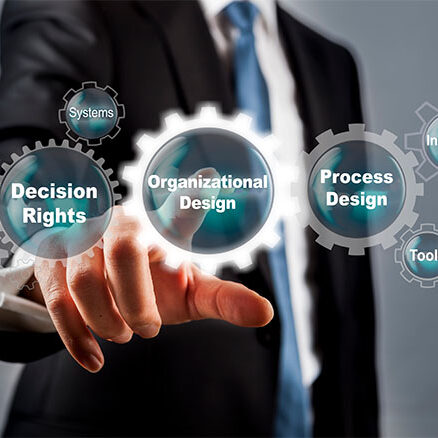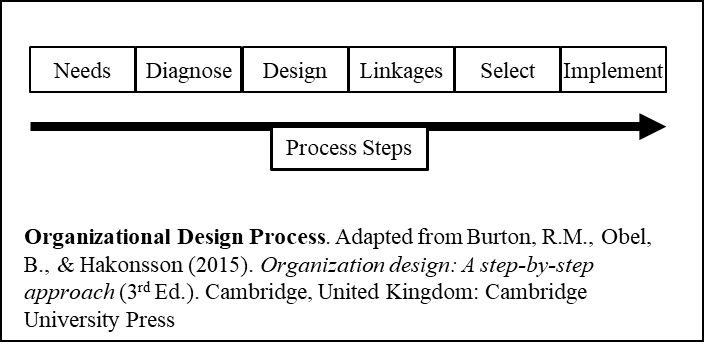What is an Organization?
What is an organization exactly? Have you ever paused to consider the core definition of an organization, its purpose, and why one may exist? Consider these definitions:
“An organization is a group of people working together to achieve common goals” – Walker, 1992
“An organization is the behavioral space in which groups of people act to achieve specific goals.” – Gerstein, 1992
“Organizations are social entities that are goal-directed, deliberately structured activity systems with a permeable boundary.” – Daft, 1995
“An organization is a collection of people and processes designed to fulfill a stated purpose.” – Hannum, 2000

Organizations exist to setup a company’s value chain, apply resources, manage resources, and align resources…all to generate products and services that are consumed in the marketplace. An organization structure is a formal mechanism for the management of Financial Capital, Physical Capital, and Human Capital. We may poke-fun at the concept of “boxes and lines” in the form of a chart, but those graphic depictions of an organization are important communications tools. They communicate the formal relationships that provide the hierarchy for how a company will generate organizational capabilities and how it will produce goods and services.
The Organizational Design Process
The design of organizational structure is part of moving a company from where it is today to where it needs to be to achieve improved performance and to execute its business strategy. The design is much more than drawing boxes and lines. Done well, organizational structure is always part of a holistic review against performance disciplines. These performance disciplines, when combined properly, yield organizational capabilities. Good organizational design processes are always:
• Done in context of business strategies and goals
• With full view of the business ecosystem
• Data driven with strong analytics
• Inclusive of key stakeholders
• Conducted with caution
• Considerate of company culture and employee wellbeing

The figure above represents a basic six step process for approaching organizational design. This same figure and more are presented in our book, “Organizational Design that Sticks!” which you can order to Amazon and other major book retailers. Most people find the first three steps to be intuitive. It makes a lot of sense to us to collect needs, diagnose any presented problems, and then to architect a structure. An OD/OE practitioner will work through several design and structure alternatives and evaluate each alternative based on its ability to meet stated business objectives. Once the structure is chosen, the Linkages step is vitally important. This is where the organizational changes are assessed against other needs which will enable (or disable) the changes. For example, if the new organizational structure requires changes in workflow/processes, then a team will need to be established to ensure that workflow is adjusted along with the organizational changes. The linkages review should always include a scan against processes, decision rights, systems, job tools, people, and incentives. These combined with organizational structure work to drive capabilities.
Drivers of Change
Generally speaking, the reasons that you would engage in an organizational design effort always center around REAL business drivers. These include things like:
• Performance below expectations
• Shifts in market conditions
• Changes in consumer/customer buying behaviors
• Industry segment changes
• New and changing competitive landscape
• New technology
• Changing regulations and laws
That being said, whether or not your business is in a state of GROWTH or CONTRACTION makes a big difference.

Growth can mean the addition of products and/or services. The company may be making rapid adjustments to product/service differentiation to improve their competitive position. Production capacity may be under pressure to increase quickly. Support efforts may become increasingly important to ongoing customer retention and satisfaction. Often under rapid growth situations, capacity constraints factor-in across the enterprise.
Contraction brings with it a completely different and often times opposite sets of considerations. If the business is shrinking, are there products and product categories that are going to be deleted and removed? Are there services that will be eliminated? As the company contracts and regroups, how will it retain market differentiation? There may be a need to reduce production capacity and aftermarket customer support. The most challenging example of contraction is when a company is shrinking but it refuses to make the hard choices to eliminate things, pushing the organization and employees to do the same level of work under reducing levels of resources. ☺
© 2021, All Rights Reserved, Alonos® Corporation
To read further on the subject of organizational design, check out our book on the subject, or read an abstract of the book, and read other related articles.
Suggested Citation:
Albrecht, D.J. (2021). What is organizational design? Alonos Corporation. Retrieved from: alonos.com
References:
Albrecht, D.J. (2018). Organizational Design that Sticks! Multidisciplinary Approach for the Business Ecosystem. Dallas, TX: Alonos Corporation.
Albrecht, D.J., & Albrecht Gomez, M. (2020). Decide to Thrive: Improving business performance through decision effectiveness. Dallas, TX: Alonos Corporation
Burton, R.M,. Obel, B., & Hakonsson (2015). Organization design: As step-by-step approach (3rd Ed.). Cambridge, UK: Cambridge University Press.

